Have you ever wondered if you’re cleaning your home’s exterior often enough–or maybe even too often? Many homeowners believe an annual rinse is sufficient, while others never give it a second thought. The reality is, the right pressure washing schedule depends on your siding, climate, and curb appeal goals. If you want to extend the life of your home’s exterior, prevent mildew, or simply keep things sparkling for the neighbors , it’s time to rethink your cleaning routine. Dive in to discover how often you should pressure wash a house, why professional pressure washing can be a game-changer, and the essential tips you need for a brighter, healthier home.
Curious About How Often Do You Pressure Wash a House? Think Again
Most homeowners assume that power washing a house is a once-a-year event, best reserved for spring cleaning. Yet, how often do you pressure wash a house actually depends on more than just the calendar. Factors such as your local climate, the type of siding on your home, and even the trees in your yard play a crucial role. For instance, vinyl siding in a humid region might accumulate mold or mildew much faster than brick in a dry area. If you’ve recently power washed your house but already see new grime, it could be time to adjust your routine.
Pressure washing isn’t just about removing dirt–it’s about protecting your investment and maintaining your home’s value . Washing your home at the right intervals helps prevent deeply embedded stains, protects paint or finish from premature wear, and even uncovers hidden issues like wood rot or pests. By taking a proactive approach, you not only preserve curb appeal but save money on bigger repairs down the line. So, before you dismiss the need for another pressure wash, consider your local environment and siding condition first.
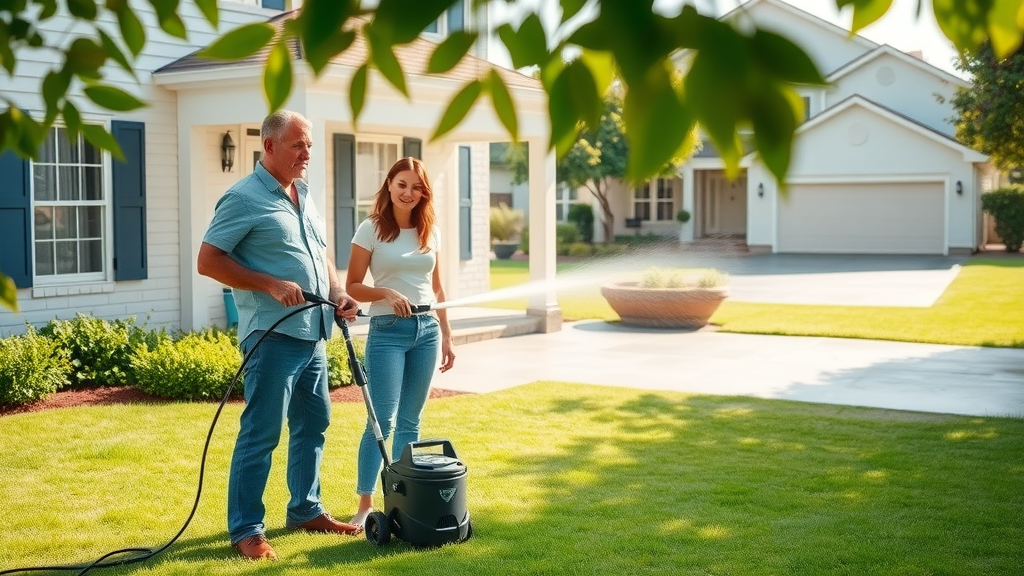
Understanding How Often Do You Pressure Wash a House and the Importance of Clean Exteriors
The frequency at which you should pressure wash your house goes beyond simple cleanliness. Clean exteriors are about health, safety, and extending the functional life of your property. Dirt, mold, mildew, and algae don’t just dull your home’s appearance; they can also cause irreversible damage. Mildew can rot wood siding, while embedded grime may lead to paint failure or brick deterioration. Homeowners interested in maintaining a fresh look while saving money in the long run will benefit from understanding optimal cleaning intervals for their unique situation.
When you pressure wash your house on a consistent schedule, you also enjoy immediate perks such as improved curb appeal and value. Studies show that a clean exterior can increase home value by up to 5%, and neighbors will notice the pride you take in maintaining your property. Most importantly, routine cleaning helps spot small issues before they escalate, like cracks, leaks, or pest infestations, ensuring your home remains safe and welcoming year-round.
- Removes mold, mildew, algae, and dirt
- Protects paint and building materials
- Increases home value
- Enhances curb appeal
What You’ll Learn About How Often Do You Pressure Wash a House
Are you uncertain about the right pressure washing schedule? You’ve come to the right place! In this article, you’ll discover:
- Optimal frequency to power wash your house
- Factors affecting how often you should use pressure washing or soft washing
- Differences between pressure washing and power washing
- Tips for hiring a pro or doing it yourself
- Cost, timing, and best practices
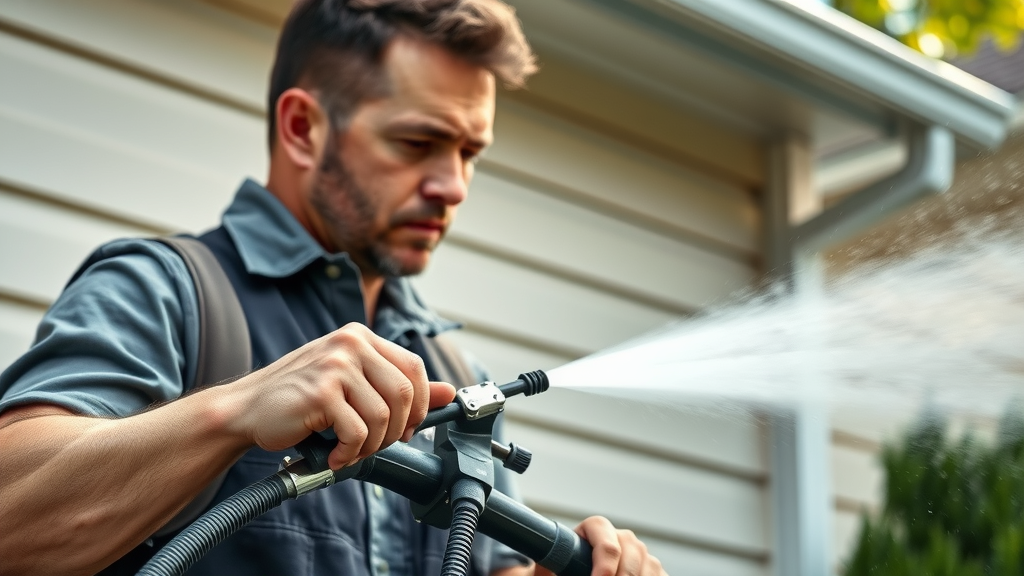
How Often Do You Pressure Wash a House? Expert-Backed Recommendations
According to industry experts and professional pressure washing services, how often do you pressure wash a house is best determined by your home’s exterior material. Each surface requires a tailored approach:
| Exterior Material | Recommended Pressure Washing Frequency |
|---|---|
| Vinyl Siding | Every 1-2 years |
| Brick | Every 2-3 years |
| Wood | Annually (or as needed) |
| Stucco | Every 1-2 years |
These are just starting points. Homes in dense urban areas with high traffic or rural settings with lots of dust may need more frequent washing. If you spot green, black, or brown stains (often algae or mildew), or if your house sits beneath many trees, you’ll want to pressure wash your home more often to prevent damage and unsightly buildup. Routine inspection and maintaining a flexible schedule based on need will help you get the most from your cleaning investment.
Key Factors That Influence How Often You Should Pressure Wash Your House
Pressure washing isn’t a one-size-fits-all routine. The time of year is critical, with spring and early fall being the best seasons to power wash a house due to moderate temperatures and lower pollen counts. If you live in a humid climate, home exteriors may attract moss, mold, or mildew much more quickly than in arid regions, often doubling the needed cleaning frequency. Your local environment—whether rural, urban, or suburban—affects how often dust, pollen, or pollutants accumulate, all impacting the optimal pressure washing schedule.
The proximity of trees or heavy foliage is another key factor since shaded, moist environments promote quicker mildew and algae growth. Further, building materials such as wood siding are more sensitive to pressure water than durable brick, so homes with delicate surfaces may require gentler methods and more strategic scheduling. Always consider your home’s specific needs, keeping an eye out for signs of dirt, stains, or discoloration as an indicator it’s time to wash your house.
- Time of year – Best seasons for power washing
- Weather and climate – Humid climates may require more frequent washings
- Surrounding foliage – Trees and shade can lead to more mildew
- Building materials – Some require gentler, less frequent cleanings
- Your home's location – Rural vs. suburban vs. urban
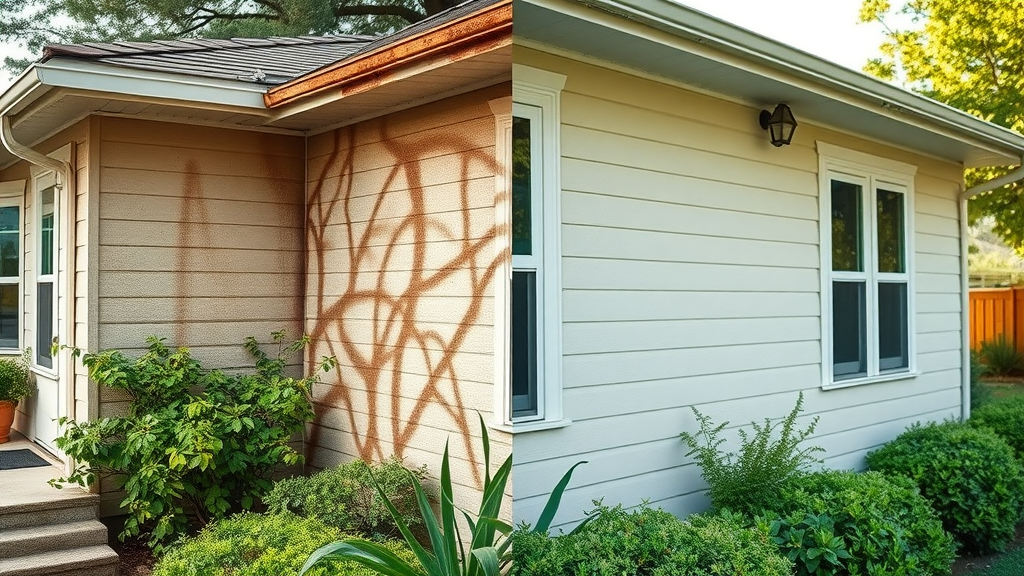
Should You Power Wash Your House More Often in Certain Climates?
Absolutely. Climates with high humidity or frequent rain create the perfect environment for rapid mold, mildew, and algae growth. If you live in the Southeast or near large bodies of water, expect to power wash your house more frequently—sometimes every year instead of every two. Conversely, homes in dry or windy climates might only need washing every two to three years, as wind-blown dust and dirt accumulate more slowly than organic growth.
If you notice streaks, splotches, or patches on wood siding or between bricks, don’t ignore them—these are telltale signs that your cleaning schedule needs adjustment. Ultimately, your goal is to protect your home’s exterior, and adapting your strategy to the local climate ensures you’ll spend less on repairs and keep your residence looking its best. Staying vigilant, especially during the peak seasons for algae and pollen, is key for any homeowner serious about curb appeal.
Don’t forget the differences between southern exposure and north-facing sides of your house. Black streaks and green patches usually show up on shady, damp sides much earlier, making spot cleaning or partial washes in the worst-affected areas a smart option between full-home cleanings.
Power Wash vs. Pressure Wash vs. Soft Wash: Choosing the Right Method for Your House
Not all exterior cleaning techniques are created equal. How often do you pressure wash a house can largely depend on whether you use a power wash, pressure wash, or soft wash method. Pressure washing relies on highly pressurized water to blast away dirt and debris—great for hard surfaces like concrete or brick. Power washing ups the ante with heated water, making it excellent for removing oily stains or really stubborn grime on driveways and patios. In contrast, soft washing combines lower-pressure water with specialized cleaning solutions for delicate surfaces such as wood siding, stucco, or painted exteriors.
- Difference between pressure washing, power washing, and soft washing
- Which method is best for vinyl siding, wood, brick, or stucco?
- When professional pressure washing services are recommended
So, which is best for your house? For vinyl siding, soft wash or a gentle pressure wash is usually safest to avoid cracks or etching. Brick exteriors benefit from less frequent but more powerful cleanings, while wood siding always needs a cautious approach with low-pressure water and appropriate detergents. If you’re not sure what type of siding you have or which method to use, consulting with professional pressure washing experts ensures no accidental damage to your investment.
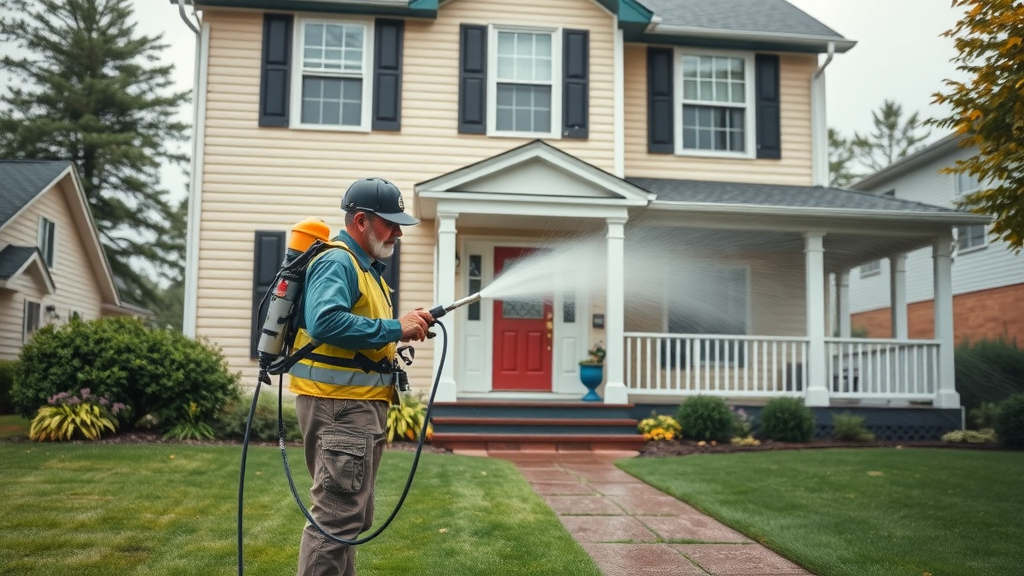
Benefits of Professional Pressure Washing vs DIY
The decision to pressure wash your house yourself or call in the pros has more to do with risk, convenience, and desired results than you might think. Expert pressure washing companies use industrial-grade equipment, ensuring a deeper, more uniform clean compared to most consumer machines. They also know the right cleaning solution and pressure setting for each exterior surface, reducing the risk of damaging wood, vinyl, or brick siding. Perhaps most importantly, professionals can identify and avoid common pitfalls, such as blowing out caulk, stripping paint, or damaging landscaping.
- Expert equipment and detergents
- Proper techniques to protect building materials
- Avoiding property or landscape damage
- Time and cost savings
DIYers often underestimate the time and effort involved, especially with two-story homes that require extensive ladder work. Mistakes—like using the wrong nozzle or detergent—can lead to costly repairs. Moreover, when you hire a professional, you save countless hours and eliminate the need for equipment rental or purchase. For the best results and peace of mind, hiring a professional pressure washing company is almost always your safest bet, especially for delicate materials or hard-to-reach areas.
How Often Do You Pressure Wash a House for Maximum Curb Appeal?
Curb appeal can make or break a first impression. If you’re thinking about listing your home—or simply want to delight your guests and neighbors—keeping your exterior spotless is a must. How often do you pressure wash a house for the best curb appeal? While the average recommendation is once a year, homes surrounded by trees, high-traffic areas, or damp microclimates could benefit from semiannual cleanings. Stay alert to pollen buildup each spring and leaf stains or algae after the rainy season.
Pressure washing doesn’t only mean the siding; don’t forget the walkways, patios, fences, and even garage doors. Clean, well-maintained surfaces reflect pride of ownership and show buyers (or passersby) that your home is well cared for. For many homeowners, hiring professionals for an annual deep clean that includes every exterior surface can significantly boost property value and make outdoor living spaces much more enjoyable.
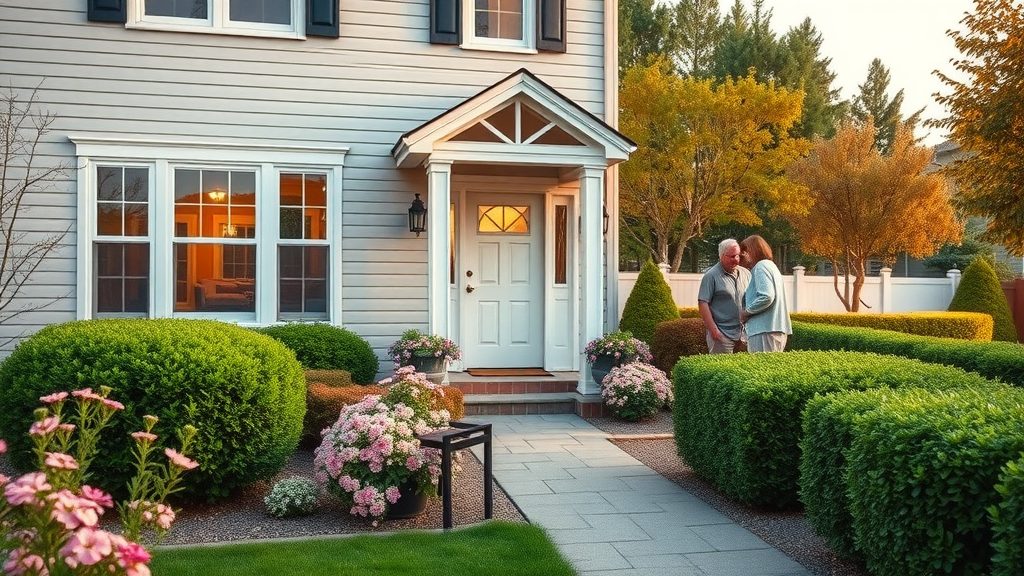
Step-by-Step Guide: How to Pressure Wash a House Safely
Tackling a full-home wash yourself? Here’s how to wash your house like a pro and minimize risk:
- Preparation: Clearing area, protecting landscaping – Move outdoor furniture, cover delicate plants, and secure electrical outlets.
- Choosing the right equipment (pressure washer vs. power washer): – For most siding, a pressure washer with adjustable settings is ideal; use a power washer only for tough surfaces like concrete.
- Selecting detergents safe for your house: – Always choose biodegradable and siding-safe detergents, especially for wood or painted surfaces.
- Best practices for technique and avoiding damage: – Start with a wide-angle spray nozzle, keep the wand at least one foot from the surface, and test a small area before cleaning the entire exterior.
Remember, always wash from the top down to avoid streaking. Avoid aiming high-pressure jets at windows or under siding, as water penetration can lead to hidden moisture problems. Use only as much pressure as needed, and if you're unsure about your equipment, invest in a consultation with a professional pressure washing service.
"Annual professional pressure washing can double the life of your home’s exterior paint." — Home Maintenance Association
Common Mistakes When Pressure Washing and How to Avoid Them
Many DIY homeowners are eager to pressure wash their house for a sparkling result, but simple slips can cause expensive damage. The first and perhaps most frequent error is using too much pressure, especially on soft building materials like wood siding or painted surfaces. Over time, this can etch, splinter, or strip your home’s exterior. Instead, opt for a soft wash or a lower pressure setting to gently lift away debris without harming your siding or brickwork.
- Using too much pressure on delicate surfaces
- Ignoring the importance of soft washing for certain building materials
- Not using the right detergents for your home’s siding or brick
- Neglecting time of year considerations for power washing a house
Another common mistake is neglecting to select the right cleaning solution. General-purpose soaps may harm landscaping or fail to eliminate mold or algae. Prioritize siding-specific, eco-friendly cleaners for best results. Finally, timing is everything: power washing during freezing weather, for instance, can lead to ice and major surface damage. Always check the forecast and wait for mild, dry days to wash your house for best results.
Hiring a Pro vs. DIY: How Often Should You Power Wash a House?
When it comes to frequency, professionals recommend most exteriors be pressure washed every 12–18 months. However, if your home is situated in a pollen-heavy region or beneath shade trees, you may need to power wash your house twice a year. The biggest question: Should you attempt it yourself or call an expert? While DIY can save on immediate costs, you risk damaging your siding, missing spots, or spending precious weekends wrangling equipment.
- When to enlist professional pressure washing services
- Cost-to-benefit analysis for DIY versus hiring pros
- How frequently professionals recommend pressure washing your home
Professional pressure washing services complete the job faster and with better results thanks to advanced equipment and commercial-grade detergents. The cost-benefit quickly tilts in favor of professionals when you factor in potential repairs and the value of your own time. For complex two-story homes, delicate surfaces, or if you want the job done once and done right, hiring a pro is your best route.
People Also Ask: How Often Should I Pressure Wash My House?
In general, aim to power wash your house once every one to two years. However, if you notice green or black stains, pollen buildup, or dingy streaks between annual cleanings, washing your home more often may be necessary. The type of siding on your home and your local climate are the two biggest factors in determining how often you should pressure wash your house.
People Also Ask: How Long Does It Take to Power Wash a 2000 Square Foot House?
On average, it takes 2 to 4 hours to pressure wash a 2000 square foot house , including setup and cleanup. Multi-story homes or those with heavy soiling may require extra time. Hiring professionals can often reduce this time frame, as they’re equipped to work efficiently and thoroughly, saving you effort and ensuring every surface is cleaned to perfection.
People Also Ask: What Is the Average Price to Pressure Wash a House?
The average price to pressure wash a house typically ranges from $250 to $600 for a single-family home, depending on size, siding material, and location. Very large or multi-story homes can cost more. Pricing generally includes labor, equipment, and cleaning solution. While DIY might seem less expensive, investing in professional services ensures a higher quality, longer-lasting result without the risk of accidental damage.
People Also Ask: How Often Should I Wash the Exterior of My House?
Exterior surfaces should be washed at least once per year, with high-pollen, high-humidity, or high-traffic locations requiring more frequent cleanings. Regularly washing the exterior of your house not only maintains cosmetic appeal but also prevents mold, algae, and other organic buildup from compromising your siding, paint, or brickwork.
Essential FAQs on How Often Do You Pressure Wash a House
- Can pressure washing damage my home? Yes, using too much pressure or the wrong cleaning solution on delicate building materials can cause permanent damage. Always use the right technique for your siding type or hire professionals.
- What’s the difference between soft washing and power washing? Soft washing uses low-pressure water and cleaning agents, ideal for delicate surfaces. Power washing involves heated, high-pressure water for tough stains and hard surfaces.
- How do I know it’s time to power wash my house? Visible dirt, streaks, green or black stains, and fading paint are clear indicators your exterior needs cleaning.
- Are there areas I shouldn’t pressure wash? Yes, avoid windows, roof shingles, air conditioning units, and any areas with damaged caulking or paint.
- Do I need special insurance for DIY pressure washing? It’s wise to check your homeowner’s policy, as property damage caused by DIY pressure washing may not be covered.
Video: How Often Do You Pressure Wash a House? Professional Demonstration
Video: Soft Washing vs Pressure Washing for Different Building Materials
Video: When to Hire a Professional for Pressure Washing
Ready to Protect Your Home?
Keep your exterior spotless, lasting, and beautiful all year round—call Refreshing Pro Wash at (541) 636-8094 to learn more or book your expert service today!
Maintaining your home’s exterior through regular pressure washing is essential for preserving its appearance and structural integrity. The optimal frequency for pressure washing depends on several factors, including your home’s siding material, local climate, and surrounding environment.
Siding Material Recommendations:
-
Vinyl Siding: Typically requires pressure washing every 1 to 2 years to prevent dirt and mildew buildup. ( aroundthebendpressurewashing.com )
-
Wood Siding: Should be pressure washed annually or as needed, with a gentle approach to avoid damage. ( aroundthebendpressurewashing.com )
-
Brick: Generally needs pressure washing every 2 to 3 years, though more frequent cleaning might be necessary if exposed to excessive dirt and grime. ( aroundthebendpressurewashing.com )
-
Stucco: Requires more gentle cleaning, often once every 2 years, as it’s more susceptible to damage from high pressure. ( aroundthebendpressurewashing.com )
Environmental Factors:
-
Climate: In humid regions, mold and mildew can accumulate quickly, necessitating pressure washing every 6 to 12 months. Conversely, drier climates may only require cleaning every 1 to 2 years. ( aroundthebendpressurewashing.com )
-
Proximity to Trees: Homes surrounded by trees may experience more sap, pollen, and debris buildup, necessitating more frequent cleaning. ( essentialspressurewashing.com )
-
Air Quality: Homes located near busy roads, factories, or construction sites are more likely to accumulate dirt, dust, and pollutants on their exteriors. If your house is in one of these areas, consider pressure washing every 6 months to maintain a clean appearance. ( aroundthebendpressurewashing.com )
Best Time to Pressure Wash:
The ideal time to pressure wash your house is during mild weather conditions, such as in the spring or early fall, when temperatures are between 40 and 75 degrees Fahrenheit. This ensures effective cleaning and quick drying. ( angi.com )
By considering these factors and adhering to a tailored pressure washing schedule, you can effectively maintain your home’s exterior, enhancing its curb appeal and longevity.
 Add Row
Add Row  Add
Add 


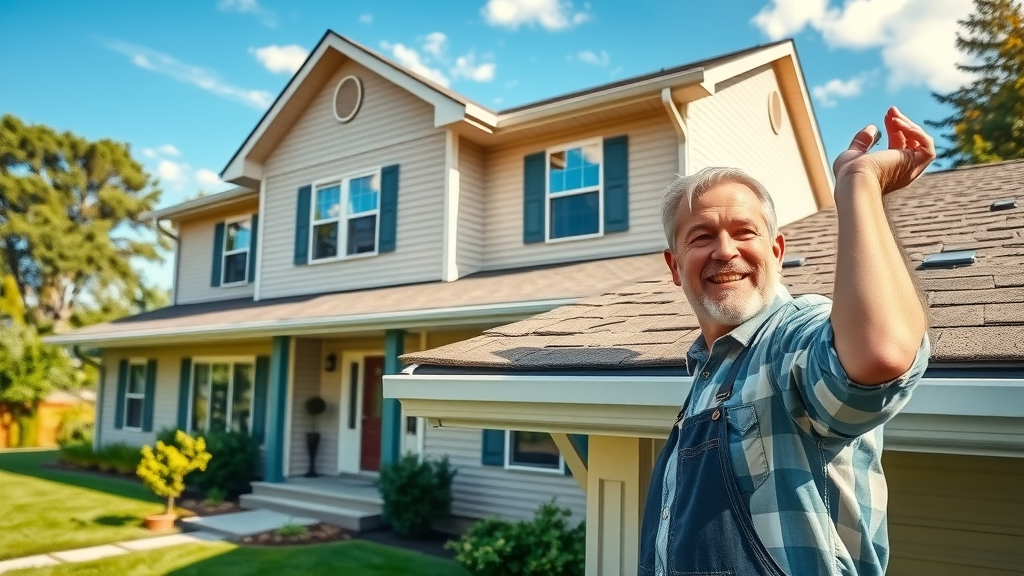


Write A Comment